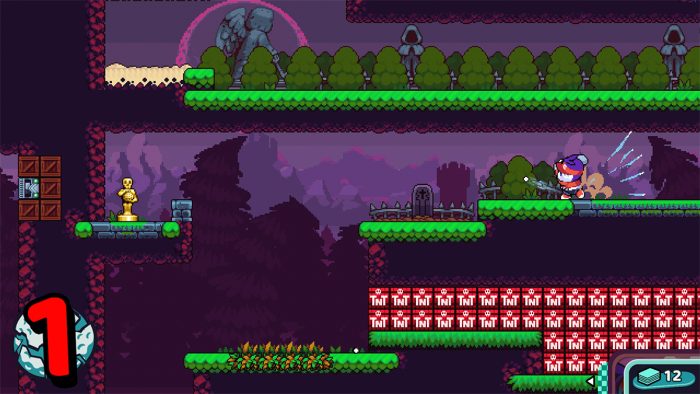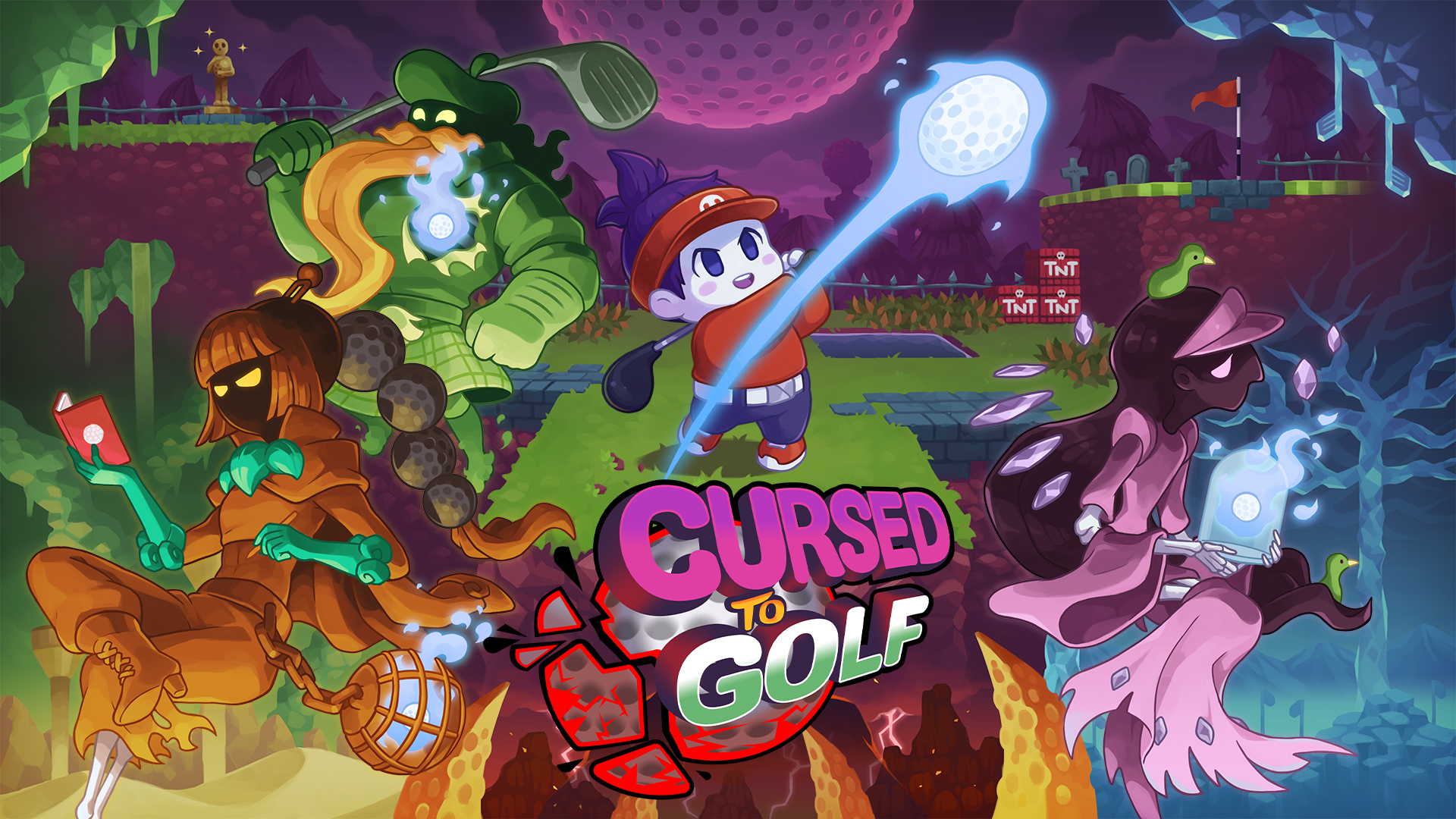I can fore-shadow spending a lot of hours with this game
Cursed to Golf earned a SideQuesting PAX East 2022 Team Choice Award! Find out why below!
“If I go there first, then blow this up, then it goes there next, then it hits there, then it goes over there, then I stop time and it drops there, THEN I get it over there, then I hit the statue, then I go over there, then I land it there, then I might have a chance to get it to the pin!”
That’s the string of thoughts that was going through my head as I slid the Birdie-Eye view camera around the stage in the PAX East demo of Cursed to Golf.
“Holy shit, maybe I can pull this off? But it’s going to be really, really important to get this first part right.”
In reality, I needed to get all of those steps right or none of those steps right. Instantaneously as I took that first swing at the ball I realized my aim was slightly off and I had overpowered the shot, bouncing it off of the corner of the cliff edge in front of me and sending it right back at my face. Yikes. What a miss. And what a wasted shot for the Par 5.
“Well, uh, yeah that wasn’t that great,” Liam Edwards, Game Director at developer Chuhai Labs, lightly proclaimed. “It’s gonna be real tough.”
Though Cursed to Golf features physics-based golf ball bouncing play, it really focuses more on timing, aiming, and strategy. Even screwing up an important shot isn’t the end of a run (at least not at the beginning) and you can recover if you’re smart… or enough of a risk-taker. I don’t think I’m much of either, at least as far as Liam is concerned. During the demo he coaches me along, explaining every facet about what makes the upcoming sports roguelike unique. There’s a cool story (the world’s greatest golfer dies in a freak accident and is sent to hell), cool characters (an amazing kilted Scotsman guide), and a cool gameplay loop (each 2D level requires a specific number of shots to get to the end across a variety of obstacles both horizontally and vertically). There are sand traps, lava pits, spikes, and TNT, among other things, that require great navigation skills or a bit of luck.
Again, I don’t think I have much of either. I’m struggling to make much of any headway on this course. And it’s only the demo course! It’s straightforward! “You’ll have to aim for this wall over here,” he says as I zoom around the camera to preview the rest of the course. “But you’ll have to hope it lands on this ledge and see if your next shot after that will get you to this zone,” he says as he points at the screen. There seems to be a bit of preparation needed to figure this out. C2G requires a bit of puzzle solving, as shots follow a cadence to get to the end pin.
I swing, half expecting to close my eyes like a 4 year old so that I don’t see the upcoming mistake. But I don’t, and instead hear “Oh. OH! That was wild. I didn’t think it would do that!” My angle and shot were somehow good enough to launch a series of bounces off of walls and floors and land within that specific red zone. The game includes modifier cards that can give us specific bonuses, and one lets us take a practice swing. “Oh, okay. There’s a little thing here that most people don’t figure out and slap their faces when they do.” Liam teases. Meanwhile I was a step ahead of him: using the practice shot card I could make a clear snipe of the +2 shot statue behind me (breaking one gives us more shots towards our course par). I get to keep the added shots even though I used a practice card, so I am completely back in the game again and within eyesight of the pin.

But that’s sort of the charm of the game. Even if you mess up, even if you think you’re out of it, a modifier or a stroke of luck (pun heavily intended) can turn the game around.
“Ha, took you long enough! I’m already done over here.” Our own Taylor Bliss had accompanied me to the PAX session, and when Liam mentioned that the demo we’re playing had just been rereleased on Steam, he brought out his newly acquired Steam Deck and downloaded it, playing along. Yes, he was farther along the demo than I was, but I was also listening to and conversing with Liam about the game’s ins and outs so I had an excuse.
And those ins and outs are great. The whole package is great. It feels great, from the virtual weight of the ball to how swings from the three different clubs affect the way it launches and lands around the screen. It looks great, from the pixelated style to the energetic animations to the high-contrast environments. And it sounds great; I had some good SNES sound chip vibes coming out of the experience. The Chuhai Labs development team have put a lot of charm into the game, and it genuinely feels like they had fun doing it. Liam is bubbly talking about it, even though he’s told the pitch a thousand times at this point.
I can’t wait to get my hands (gloves?) on the final product, and see how far I can take my poor skills and bizarre luck in the underworld’s premiere shifting golf course.
Oh, and it worked great on the Steam Deck — so much so that the familiar chirping soundtrack was on repeat in the SideQuesting hotel room for three nights.


No Comments